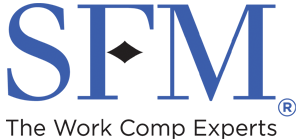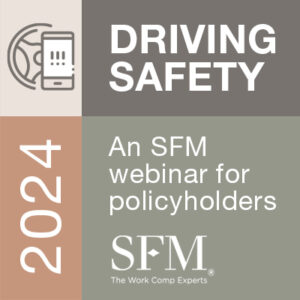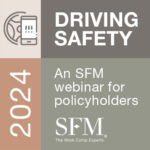Supporting your aging workforce is not only beneficial to employees, but it can ensure a good balance of skills for your workplace.
The concept of “productive aging” is not new. Robert Butler, a Pulitzer Prize-winning author and founding director of the National Institute on Aging , first coined the term in the early 1980s.
The National Institute for Occupational Safety and Health (NIOSH) identifies four key attributes of productive aging:
- A life-span perspective
- Comprehensive and integrated strategies
- Outcomes that recognize the priorities of workers and organizations
- Work culture that supports age diversity
With age comes ability
Older workers bring several attributes that contribute to an organization’s success. A 2023 article from the Society for Human Resource Management (SHRM) discusses where older workers tend to excel, including:
- Relationship building
- Negotiation
- Leadership
- Communication skills
- Loyalty
- Patience
- General know-how
- Strong work ethic
- Problem-solving skills
Statistics show the need for workers of all ages
The percentage of workers 65 or older has grown by 117% in a span of 20 years, while employment of individuals 75 years or older has likewise increased by 117%, reports the National Institute for Occupational Safety and Health (NIOSH), citing numbers from the U.S. Bureau of Labor Statistics.
The overall number of older people is projected to continue to grow from 2030-2050, as well. Despite fears of that population keeping up with technology, it shouldn’t be a concern, according to Gary A. Officer, president and CEO of the Center for Workforce Inclusion.
“With the rapid advances in artificial intelligence, companies will need established and skilled workers more than ever for the skills that cannot be replaced by AI, such as relationship building, negotiating and leadership,” he told SHRM. “While technology can rapidly accelerate what we can accomplish, it cannot replace a human with years of established soft skills and communication skills.”
At the same time, employers should focus on knowledge transfer with their older workers.
“Leaders should be looking to learn from subject matter experts and work with them to transfer skills to other team members,” said Jody Rogers, SFM Senior Vice President, Human Resources. “It helps organizations figure out what’s important to train on and to identify gaps, therefore departing employees should be looked at as important resources.”
Rogers said step one in this process is to foster an environment in which potential retirees can openly communicate their needs and share their retirement date without fear of retribution. She explained that change has to come from the top down within an organization, with managers and supervisors playing a crucial role.
“At SFM, we have created a culture that encourages employees come to us far in advance of their retirement, often a year or more, to tell us what they’re thinking for their future,” Rogers said. “That’s unheard of and it goes to show that a positive environment with open dialogue benefits everyone.”
Employers should also keep in mind that the population of younger employees with the education and skills to step into those roles is not large enough to fill all the positions currently held by employees with retirement plans in the near future.
The U.S. Chamber of Commerce reports that as of 2023, the U.S. is experiencing a labor shortage of 75%, which means that 3 in 4 employers are unable to find suitable workers.
Rogers suggested organizations focus on hiring and retaining employees at all ages for their skills rather than based on the number of years they may be able to keep that person on staff. She said the quality of work older employees can contribute may make their shorter tenure worth it for an organization. For example, hiring experienced employees could come with benefits like a shorter onboarding and training period.
“If someone wants to come in everyday and work, and they are passionate about their work and highly skilled, why wouldn’t you want to hire them?” Rogers said. “There are also no guarantees a younger employee will stick around any longer than the employee nearing retirement age.”
Tips for supporting aging workers
Rogers shared a few ways employers can help maturing employees keep working while planning for their futures:
- Be open to providing opportunities for increased income, which may be especially beneficial for those employees looking to add to their retirement funds
- Allow employees to take on jobs with fewer responsibilities or that are less demanding. This may include transferring them to a different department and modifying their workspace or physical duties
- Accommodate flexible work schedules and arrangements, including remote and hybrid work
- Enable employees to reduce hours and shift from full-time to part-time
- Support employees who are caregivers for loved ones. This duty can cause an employee to miss a day or more of work, sometimes unexpectedly. Being a caregiver can be taxing on the employee emotionally, physically and financially
- Consider the needs of employees of all ages when choosing benefits for your workforce
- Encourage employees to participate in succession planning, professional development training and mentoring. Consider offering mentoring options that enable sharing knowledge in both directions because all generations can learn skills from one another
Conclusion
Overall, employers should put an emphasis on developing sustainable strategies for supporting the physical, mental and financial health of an aging workforce. This should encompass safety in the workplace and wellness in general. An added bonus is that these strategies can be beneficial for employees of all ages.
Originally published December 2019; updated May 2024.

 Get expert information and statistics on why being cautious behind the wheel is important during SFM’s upcoming webinar.
Get expert information and statistics on why being cautious behind the wheel is important during SFM’s upcoming webinar.